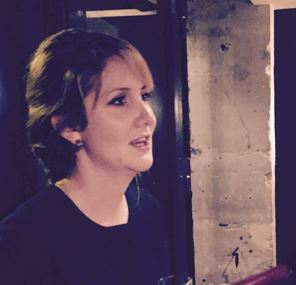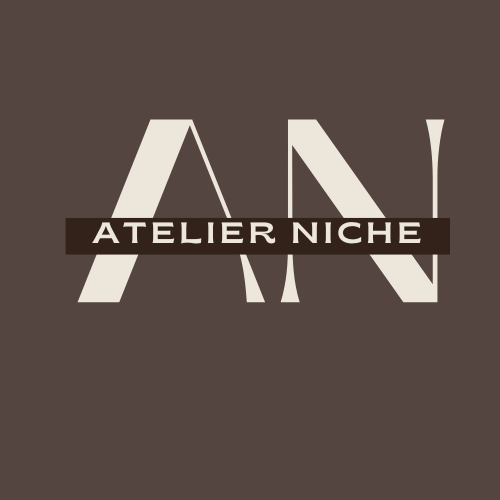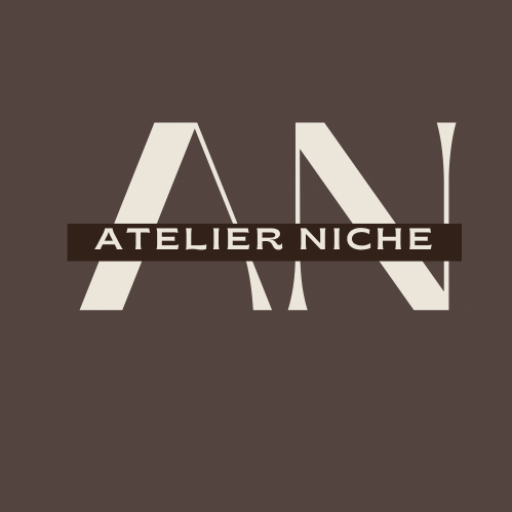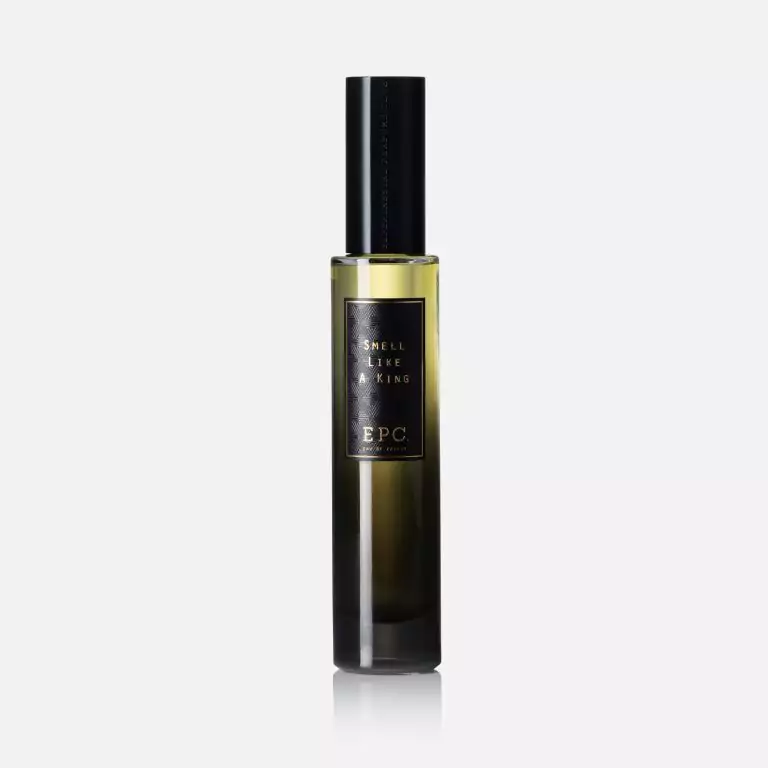Have you ever walked into a department store, overwhelmed by the wall of designer perfumes, only to wonder if there’s something more unique out there? Maybe you’ve heard friends rave about their “niche designer perfume” but couldn’t tell how it differs from the bottle of Chanel or Dior on your dresser. Or perhaps you’ve experienced sticker shock when browsing boutique perfume houses, questioning if these exclusive scents are really worth the extra cost.
The world of perfumes can be confusing, with so many options between mainstream perfume markets and limited distribution fragrances. Many perfume lovers find themselves lost in a sea of choices, unable to understand what truly sets these categories apart beyond their price tags.
But here’s the good news—understanding the real differences between niche designer perfume and designer perfumes isn’t as complicated as it seems. In this guide, I’ll break down exactly what separates these two fragrance worlds, from their creation stories to their ingredients, and help you discover which type might be your perfect scent match. Whether you’re a fragrance newbie or a seasoned collector, you’ll walk away knowing exactly what you’re buying the next time you shop for a signature scent.
The Origins: How Niche and Designer Perfumes Emerged in the Fragrance World
The fragrance world wasn’t always split between niche designer perfume and designer perfumes. Back in the 1980s, the mainstream perfume market became flooded with similar-smelling scents as big brands chased mass appeal. These designer fragrances, often backed by celebrity endorsements and flashy ads, aimed to please everyone – but ended up lacking originality. This sameness created a gap in the market that independent perfumers were quick to notice. While designer brands were busy creating the next bestseller, these artisans saw an opportunity to create something different.
Niche designer perfume isn’t actually new – it has roots going back centuries in traditions like Indian attars and Middle Eastern oud. But the modern niche movement truly took off in the late 1970s with pioneering houses like L’Artisan Parfumeur. These boutique perfume houses focused on creating unique scents without worrying about pleasing the masses. They used rarer ingredients, created limited batches, and sold through select shops rather than department stores. The focus shifted from marketing to the actual art of perfume-making.
By the 1990s, more consumers grew tired of smelling like everyone else and began seeking exclusive fragrances that reflected their personality. As niche perfumes gained popularity, the lines between the two categories started to blur. Many luxury corporations began buying successful independent brands – like when Estée Lauder purchased Le Labo and LVMH acquired Maison Francis Kurkdjian. Today, the difference remains clear: designer perfumes aim for wide appeal with strong marketing, while niche perfumes prioritize artistic expression and quality over sales numbers. What started as a reaction to mass production has become a thriving alternative in the fragrance industry.
Creativity Unleashed: How Independent Perfumers Shape the Niche Market
Independent perfumers are the beating heart of niche perfumery, bringing fresh ideas and true olfactory creativity to the table. Unlike their counterparts at big designer houses, these artists don’t answer to marketing teams or sales targets. They follow their own vision and create scents that tell stories or express emotions. Take Sarah McCartney of 4160 Tuesdays or Geza Schoen of Escentric Molecules – they push boundaries with experimental scents that would never make it through a corporate focus group. This freedom allows them to create fragrances that are more personal, daring, and authentic.
Many independent perfumers draw inspiration from their own lives and cultures. Nick Hoang’s D’Annam brand, for example, blends his Vietnamese heritage into unique fragrances like Vietnamese Coffee. This personal touch creates deeper connections with customers who are tired of generic scents. The stories behind these fragrances become just as important as the smell itself. These small-batch perfume productions also mean higher quality – perfumers like Olivia Giacobetti use rare ingredients like iris and ambrette seed that big companies might avoid due to cost or limited supply.
This wave of creativity is changing how people think about perfume. Instead of having one signature scent, many now build collections of unique fragrances to match different moods or occasions. Young consumers especially see niche perfumes as expressions of their identity, not just something that smells nice. Independent perfumers also lead the way in sustainability and ethical sourcing, matching modern values. Despite challenges like market saturation and balancing growth with exclusivity, these creative pioneers continue to reshape the industry. As niche brands now account for up to 25% of fragrance sales in some markets, it’s clear that their artistic approach has found a loyal and growing audience.
The Price Tag Explained: Why Niche Perfumes Often Cost More (And If They’re Worth It)
When you compare perfume pricing differences between niche and designer brands, the gap can be shocking. That small bottle of niche perfume might cost two or three times more than a designer fragrance of the same size. But there’s real substance behind these higher prices. Niche perfumes typically use premium ingredients that simply cost more to source and process. Think rare oud wood from Southeast Asia, real ambergris from the ocean, or jasmine flowers that must be hand-picked at dawn. These natural ingredients create deeper, more complex scents than the synthetic alternatives often used in mass-market perfumes.
The production method also drives up costs. Unlike designer brands that produce thousands of bottles at once, niche perfumes are created in small batches. This limited distribution approach means no economies of scale – each bottle absorbs a bigger share of production costs. Many niche perfumes are also handcrafted by master perfumers who spend years perfecting a single formula. This level of artisanal perfumery takes time and expertise that must be factored into the price. Even the bottles and packaging tend to be more luxurious, adding another layer of expense.
But are these exclusive fragrances worth the splurge? For many fragrance lovers, absolutely. Niche perfumes offer something truly different from what you’ll find at department store counters. The scents tend to be bolder, more unique, and often last longer on the skin thanks to higher concentrations of quality ingredients. There’s also the joy of wearing something rare that most people won’t recognize instantly. When you buy a niche perfume, you’re not just paying for the liquid in the bottle – you’re investing in artistic vision, exceptional quality, and the pleasure of wearing something truly special. For those who see fragrance as more than just smelling nice, the extra cost can be completely justified.
Inside the Bottle: Ingredient Quality and Composition Differences
The quality of ingredients in perfume makes all the difference, just like using premium materials in construction. High-end perfumes often contain natural essential oils and rare raw materials that create deeper, more complex scents. These ingredients blend together in a carefully designed formula, similar to how we create blueprints for buildings. In contrast, cheaper perfumes typically use more synthetic ingredients to save money. While these synthetic options can still smell good, they often don’t last as long or develop the same rich scent on your skin.
Perfumes come in different strengths that affect how long they last and how much they cost. Parfum has the highest concentration at 20-30% aromatic compounds, followed by Eau de Parfum (15-20%), Eau de Toilette (5-15%), and Eau de Cologne (2-4%). This is why some perfumes seem pricey – they contain more of the actual fragrance oils. Perfume styles also vary across cultures, with Western scents featuring more florals, Middle Eastern fragrances using rich oud and spices, and Asian perfumes offering lighter, more subtle notes.
The perfume industry follows strict rules to keep products safe, similar to building codes in construction. Organizations like IFRA set global standards for ingredients, while EU regulations are especially strict about what can be used. Today’s perfume makers are also focusing on eco-friendly ingredients and packaging. Many brands now offer cruelty-free and vegan options, along with new synthetic molecules that safely mimic rare natural scents. This blend of tradition and innovation ensures that quality perfumes remain both beautiful and responsible choices.
The Different Company: A Deep Dive
In the world of niche perfumery, The Different Company stands as a perfect example of what makes independent fragrance houses so special. Founded in 2000, this French brand embraces uniqueness and individuality as its core philosophy. Their name itself is a statement – they’re literally “different” from mainstream offerings, providing an alternative olfactory experience for those tired of smelling like everyone else.
What sets The Different Company apart is their approach to perfume creation. Their perfumers, whom they affectionately call “alchemists,” are encouraged to break traditional rules to create truly unique scents. This creative freedom has resulted in beloved fragrances like Bois d’Iris, which customers praise for its sophisticated blend of iris and cedarwood, and Dance of the Dawn, often described as simply “magical.”
The brand has also embraced sustainability with refillable bottles and eco-friendly packaging, including special editions that come in velvet pouches to reduce carbon footprint. Fragrances like Santo Incensio (a soft, spiritually uplifting scent) and Sublime Balkiss (described by loyal customers as fine and exclusive) showcase their commitment to quality and artistic expression. For those seeking the “luxury of difference” in the fragrance world, The Different Company offers a perfect entry point into the artisanal side of perfumery.
Exclusivity vs. Accessibility: Where to Find These Fragrance Categories
Luxury and niche perfumes are harder to find because they’re made in smaller batches with special ingredients. You’ll typically spot these exclusive scents in high-end department stores like Neiman Marcus or specialty perfume shops like The Perfume Shop’s Boutique collection. These stores carefully select which brands they carry, making sure each perfume meets their high standards. The limited availability of these fragrances adds to their special appeal and makes finding them part of the experience.
Designer and mainstream fragrances are much easier to find in your everyday shopping. Department stores like Nordstrom carry a wide range of popular designer scents. Online retailers such as Amazon offer many options at different prices, including full bottles and gift sets. Beauty stores like Bluemercury stock both well-known brands and harder-to-find perfumes. These places make it simple to buy perfumes you’ve seen in magazines or smelled on friends.
If you’re watching your budget, there are still great options available. Discount perfume websites like Perfume Price sell designer fragrances for less than department store prices. Online marketplaces often have deals, though be careful to check that sellers are trustworthy. For those interested in clean ingredients or supporting small businesses, specialized clean beauty retailers feature indie brands with unique scents. Many stores now offer sample collections or “Try Me” options so you can test perfumes before buying a full bottle. When shopping online, always check the return policy and read customer reviews to ensure you’re getting authentic products.
Finding Your Signature Scent: How to Choose Between Niche and Designer Fragrances
Choosing between niche and designer fragrances starts with understanding what makes them different. Niche fragrances are unique scents made in small batches with rare ingredients. They often tell a story and stand out from popular perfumes. Designer fragrances come from famous fashion brands you know well. They’re easier to find and usually have consistent quality across all their products. Both types have their own charm, but they serve different needs and personalities.
To find your perfect signature scent, start by thinking about your personality. Are you bold and adventurous or more subtle and elegant? If you love standing out, a unique niche fragrance like Creed’s Aventus might work for you. If you prefer classic elegance, try a designer scent like Chanel No. 5. Next, learn about fragrance families such as floral, woody, or oriental to narrow down what you like. Always test perfumes on your skin, not just paper strips, since your body chemistry affects how a scent develops over time.
Consider when and where you’ll wear your perfume. Some scents work better for office settings, while others shine at evening events. Don’t just follow trends – your signature scent should reflect your personal style, not what’s popular this season. Take your time with this process and be patient. Try a few fragrances at a time and wear them for a full day to see how they change. You can find niche fragrances in specialty perfume shops and boutiques, while designer scents are available in department stores and online retailers like Sephora. The right perfume will feel like it was made just for you, whether it’s niche or designer.
Conclusion: Your Fragrance Journey Awaits
Now that you understand the differences between niche and designer perfumes, you’re ready to explore the wonderful world of fragrances with confidence. Remember that finding your perfect scent is a personal journey—there’s no right or wrong choice between niche and designer options. What matters most is how a fragrance makes you feel when you wear it.
Trust your nose and take your time sampling different scents. Keep track of what you like and don’t like, and don’t be afraid to step outside your comfort zone. Whether you choose a bold niche creation or a timeless designer classic, the best perfume is one that feels like an extension of yourself.
Ready to dive deeper into the world of fragrances? Feel free to email me at darina@atelier-niche.com for personalized recommendations or answers to any questions you might have about your fragrance journey.
Frequently Asked Questions
1. What’s the main difference between niche and designer perfumes?
Niche perfumes are made in small batches by independent perfumers who focus on creativity and unique scents. Designer perfumes come from fashion houses and are mass-produced with wider appeal in mind. Niche perfumes typically use rarer ingredients and have more distinctive scents.
2. Why are niche perfumes more expensive?
Niche perfumes cost more because they use higher-quality natural ingredients, are produced in smaller batches, and often involve more detailed craftsmanship. The limited production means each bottle bears a larger share of the production costs compared to mass-produced designer fragrances.
3. How long do niche perfumes last compared to designer ones?
Niche perfumes often last longer on the skin because they typically have higher concentrations of fragrance oils and better-quality ingredients. However, longevity also depends on the specific perfume, your skin type, and the concentration level (parfum, eau de parfum, etc.).
4. Where can I try niche perfumes before buying?
You can try niche perfumes at specialty perfume shops, high-end department stores like Neiman Marcus, or boutique perfume stores. Many retailers now offer sample programs or “Try Me” options where you can test perfumes before committing to a full bottle.
5. Are synthetic ingredients in perfumes bad?
No, synthetic ingredients aren’t necessarily bad. Some synthetic molecules are safe and innovative, creating unique scents that would be impossible or unsustainable to produce naturally. However, natural ingredients often create more complex, rich scents that develop differently on the skin.
6. How do I know which fragrance family suits me best?
The best way to discover your preferred fragrance family (floral, woody, oriental, etc.) is through testing. Notice patterns in scents you enjoy in daily life—do you love fresh citrus smells or warm, spicy aromas? Test perfumes from different families and pay attention to which ones you’re naturally drawn to.
7. Can I wear different perfumes for different occasions?
Absolutely! Many fragrance lovers have collections for different situations. Lighter, fresher scents often work well for daytime and office settings, while richer, more complex fragrances can be perfect for evening events or special occasions.
8. How can I make my perfume last longer?
Apply perfume to pulse points (wrists, neck, behind ears) where body heat will help release the scent. Moisturize your skin before applying fragrance, as dry skin doesn’t hold scent as well. Consider using matching body products from the same line to layer the fragrance.
9. Are perfume samples worth buying?
Yes, samples are a great investment! They let you test how a fragrance develops on your skin throughout the day before committing to a full bottle. This is especially important with pricier niche perfumes, where a full bottle can be a significant purchase.
10. How do I know if a perfume is authentic when buying online?
Buy from reputable retailers like department store websites, the brand’s official site, or established beauty retailers. Watch for red flags like prices that seem too good to be true, poor quality images, or packaging inconsistencies. Read customer reviews and check the seller’s return policy before purchasing.

Darina Doroshenko is the Managing Director of Atelier Niche; specializing in bringing exclusive niche perfume and skincare brands to the UK, Europe, CIS, and Middle East. With over 18 years of experience, she has held top positions at prestigious brands like Chanel, Givenchy, Shiseido, Penhaligon’s, L’Artisan Parfumeur, Serge Lutense, and Roja, overseeing all channels of distribution.



0 Comments